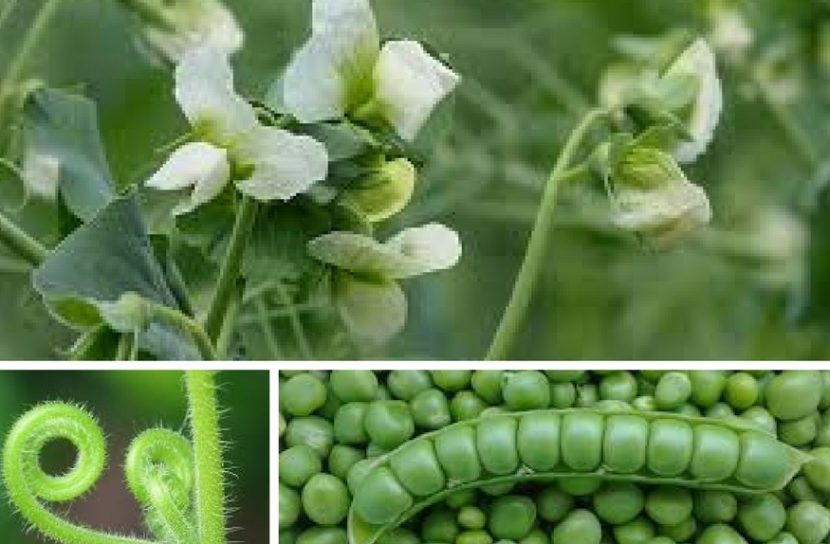Pisum sativum
Cultivation
Sow directly to its regular spot. Climbing peas need trellises to grow, and bush varieties will benefit from them as well.
Distance between plants
Bush peas: at least 30 cm (12 in) between rows, at least 5 cm (2 in) between plants in a row. Climbing peas: at least 1 m (3 ft) between rows and at least 30 cm (12 in) between plants in a row.
Location
Sunny.
Amount
Approx. 20 plants per person.
Time of planting
Bush peas: from beginning of March till end of August. Climbing peas: from beginning of March till end of May. Minimum soil temperature is 5 °C (41 °C). It germinates in 8 days.
Fertilization
If the soil is good, it doesn’t need fertilizing. Don’t use barn manure or other organic nutrients. You can fertilize climbing peas with home compost or water regularly with algae brew.
Watering
It needs a lot of water, especially during blooming and forming of grains. Water once a week 20-30 cm (8-12 in) deep. Don’t water on leaves or blooms.
Pea’s good neighbors
Swiss chard, brassica vegetables, zucchini, squash, radish, endive, lettuce, eggplant, potato, melon, watermelon, cucumbers, turnip, kohlrabi, spinach, asparagus, celery, Florence fennel, sweet corn, calendula.
Pea’s bad neighbors
Onion, leek, garlic, chives, shallots, tomato, peppers, beans.
Diseases and pests
Pea moth, grey mould, lice. Keep the soil soft, water with algae solutions and do not use nitrogen fertilizers.
Pea’s storage
Pick young pods regularly. The grains can be frozen, after being blanched for 2 minutes and cooled in cold water.
Food
Young fresh grains and pods. It contains a lot of protein, vitamins and minerals.
Important
It germinates successfully in low temperatures. Avoid some pests with early planting. In heat, pick very young pods with grains not to lose on quality.
Miscellaneous
When regularly picking the pods, the plant keeps blooming. Bush peas don’t need their own garden bed and can be planted with cabbage, Savoy cabbage, cauliflower or potatoes. The rests of the plants are great for composting or soil mulching.

